Inside Mr. Darcy's Drawers
Norah Worthington, Fashion Archives Intern, Summer, 2018

1803 Costume Parisian fashion plate showing “American hat, silk pants, and short jacket”
Jane Austen fans are a devoted group of historical dress artisans. The women’s clothing certainly gets a lot of attention, but the men of that period can be just as elegant and interesting. In fact, some of our modern assumptions about a classic men’s look come from the early 1800’s when a well dressed man could wear light colored trousers, a white shirt, and a navy jacket. The nineteenth century man would need a vest (waistcoat) and neck wear (cravate) to complete the look, but the basic elements sound like the prep school uniform of today.
A pair of early nineteenth-century silk trousers in the collection has details both familiar and foreign to the modern gentleman. A closer look shows how many details go into making up this garment.
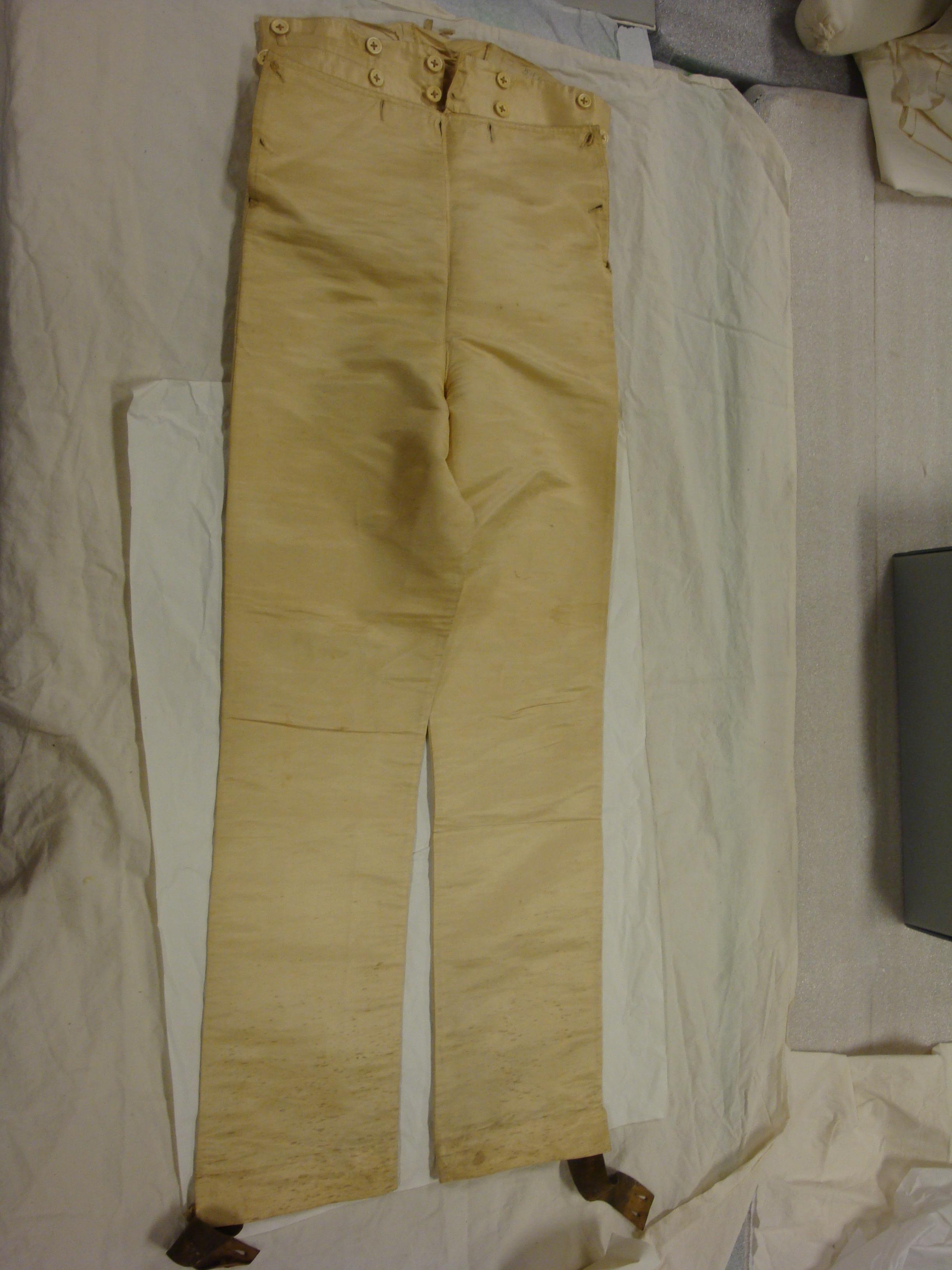 Trousers, circa 1805-1815, silk, cotton, linen, leather, bone, Maryland Historical Society, Gift of Misses Frances and Jean H. Gilmore, 1954.60.3.
Trousers, circa 1805-1815, silk, cotton, linen, leather, bone, Maryland Historical Society, Gift of Misses Frances and Jean H. Gilmore, 1954.60.3.
These trousers are likely from the first quarter of the nineteenth century. They are made of cream silk fabric with bone buttons and leather straps that button to the pant leg as stirrups. They are neither the most tightly fitted nor the fullest pant leg seen in the period, but somewhere in the middle. The fabric has a sturdiness that we don’t associate with silk clothes today and the soil on the stirrups shows these were definitely worn. They are entirely hand stitched and there are several places where the fabric has been pieced. In a time when fabric could be very expensive, these small extensions that maximized fabric were common and not looked at as patching.

In an age before the zipper fly, these trousers close with a broad flap called a “fall front.” (This is still how “sailor style” pants close.) There are two pieces of fabric, called “bearers,” that come from the sides and fasten in the center with buttons, the fall front folding up over them when worn. The bearers are attached to the waistband and often have pockets in them.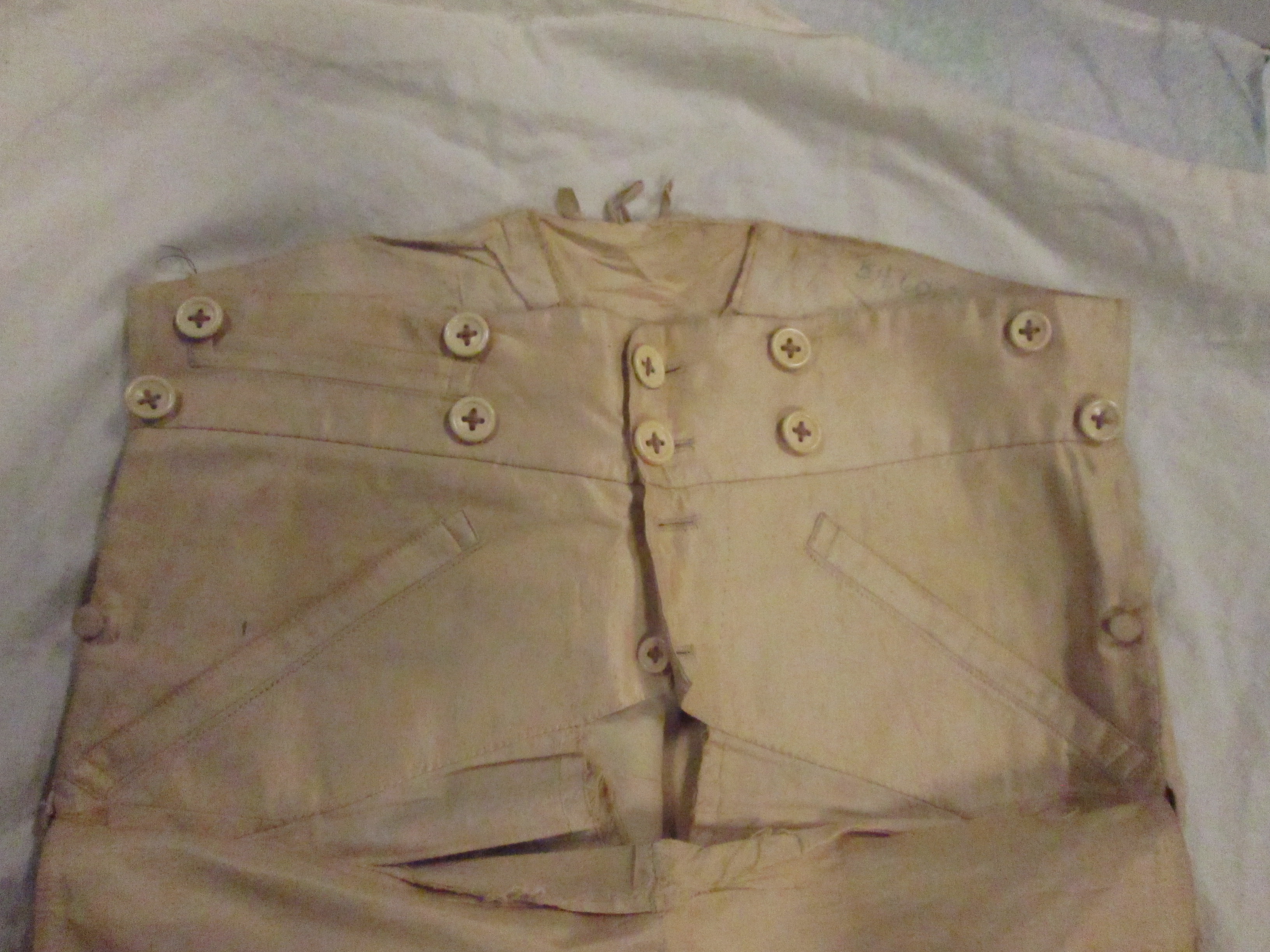
There are no belt loops on these trousers; the buttons across the top of the waistband are for “braces” (suspenders) to hold the pants up. They have a pocket on the right front of the waistband, and two on each side of the pants for a total of five pockets in all. Men have always wanted pockets. Diagonal strips of fabric (“welts”) finish off the top edge of two pockets, and the small buttons on each side control access to the side pockets. These buttons are covered in the silk fabric because they are the only ones that would actually show. The bone ones would be covered by a man’s waistcoat (vest).
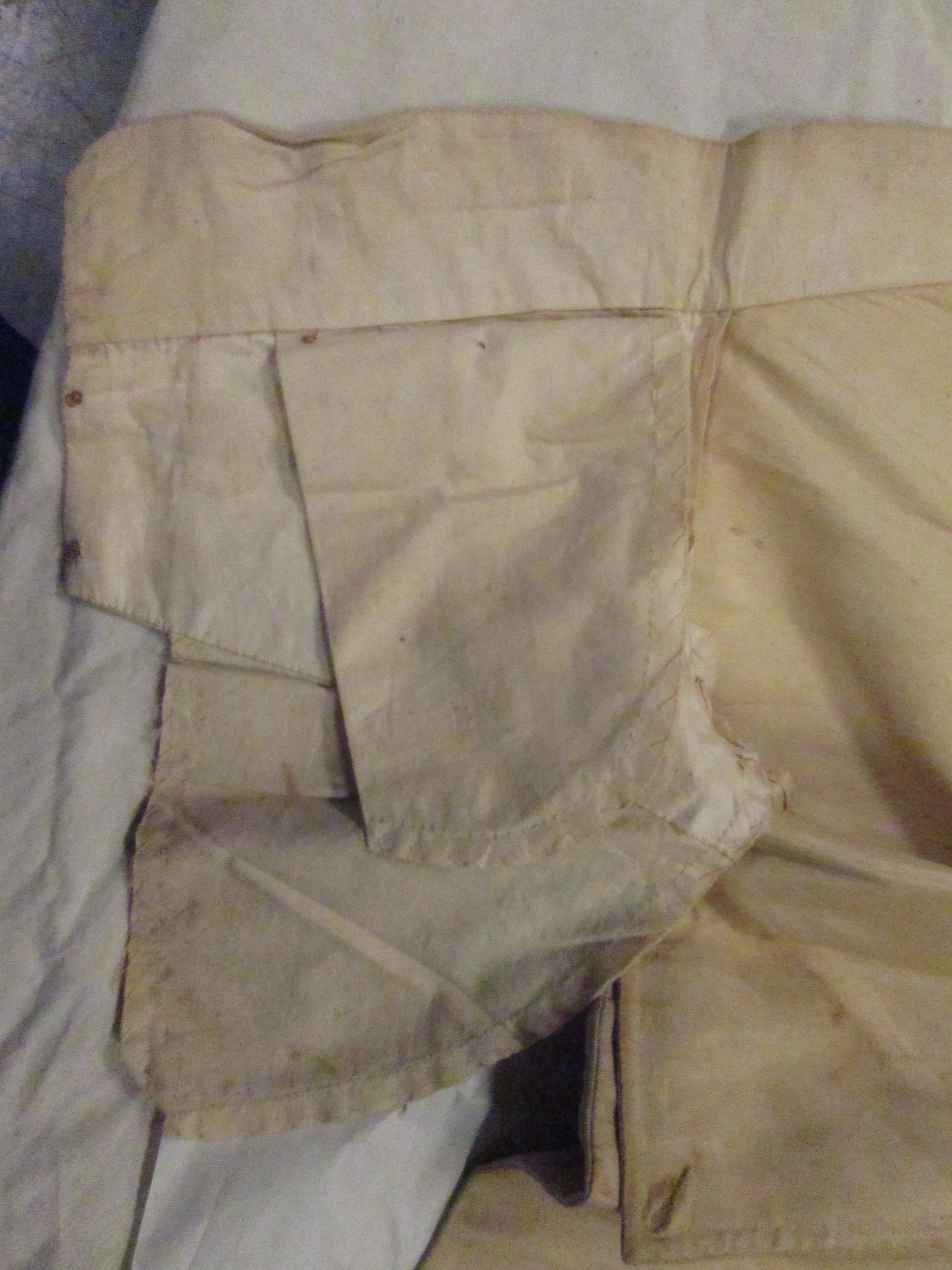
Like today’s trousers, the pockets are made of a coarser fabric than the outside of the pants, in this case cotton.
When the fall front is folded up, it buttons to the bearers creating a smooth, fitted shape across the front. Flat front trousers are still an option for today’s man, but most have a fly closure. These would have had a really flat front.
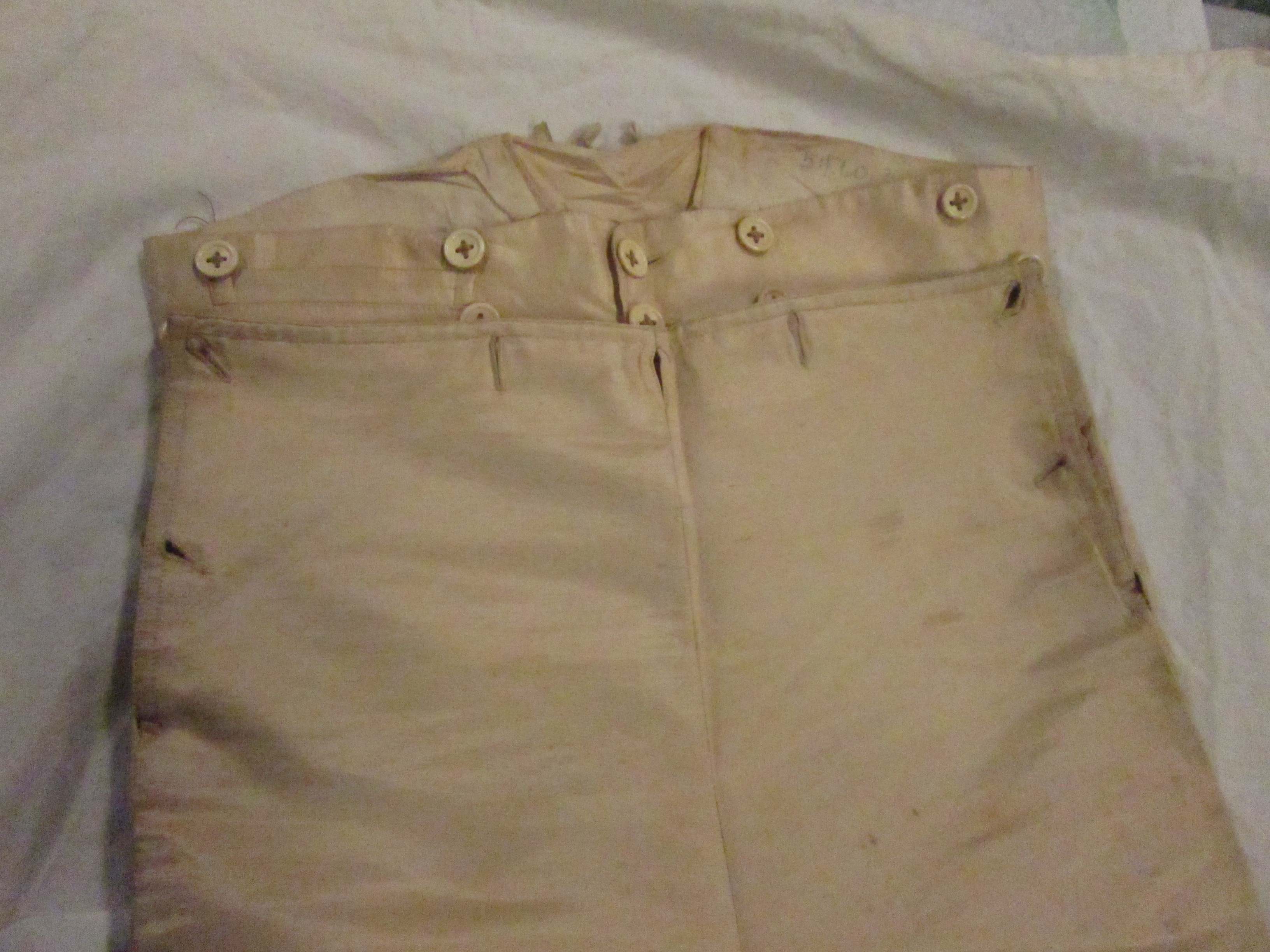
Trousers, circa 1805-1815, silk, cotton, linen, leather, bone, Maryland Historical Society, Gift of Misses Frances and Jean H. Gilmore, 1954.60.3.
On the back, the pants can be tightened across the waist with a tie across a triangular inset called a “gusset.” Pants in the eighteenth and nineteenth centuries had fullness in the seat for riding and general ease of movement. This ease makes the period trousers look like they have a saggy backside to the modern eye. (Having made trousers for this period, I learned it is essential to have room in the seat for when the gentleman bends, or all kinds of bad things happen.)
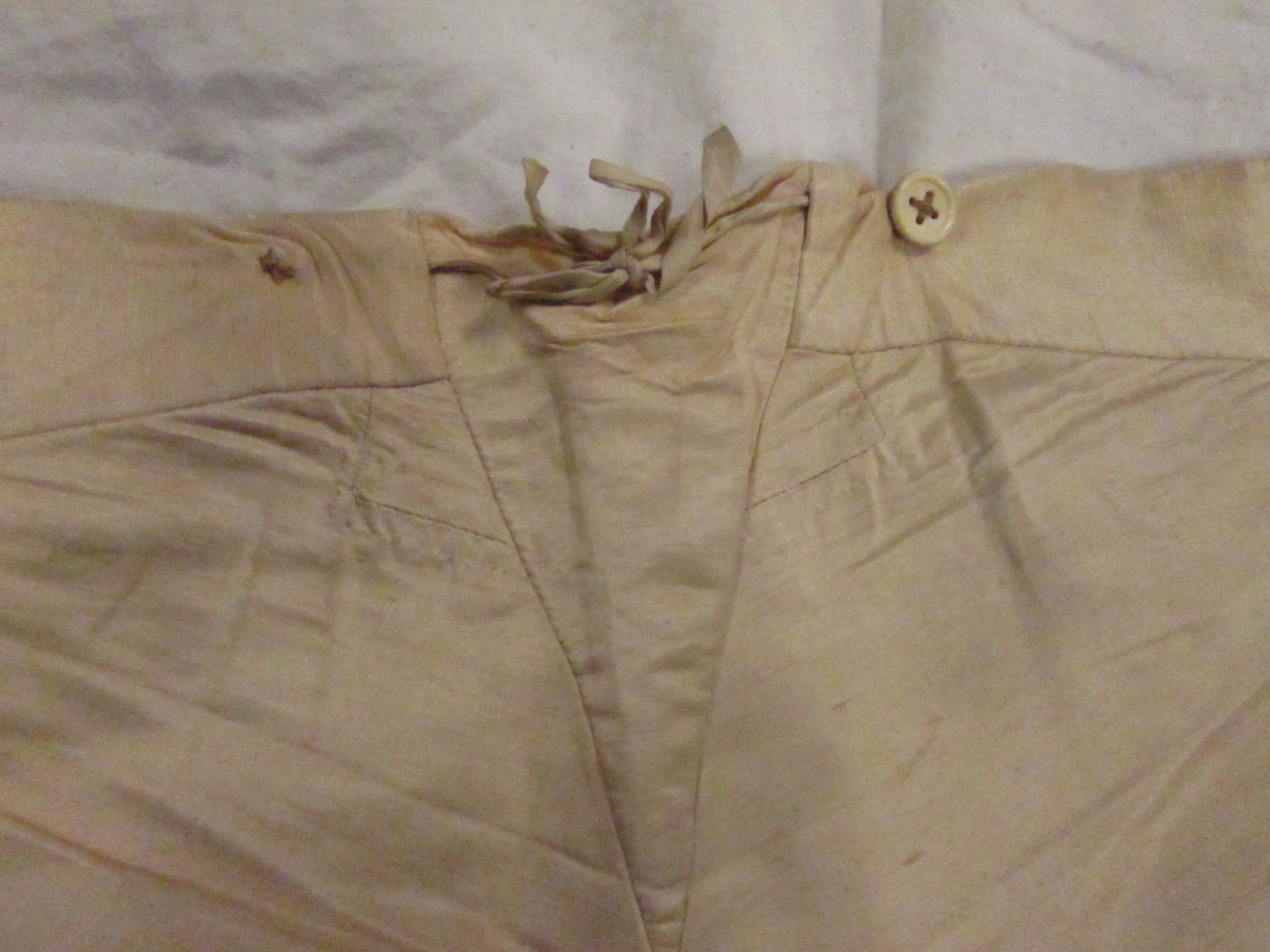
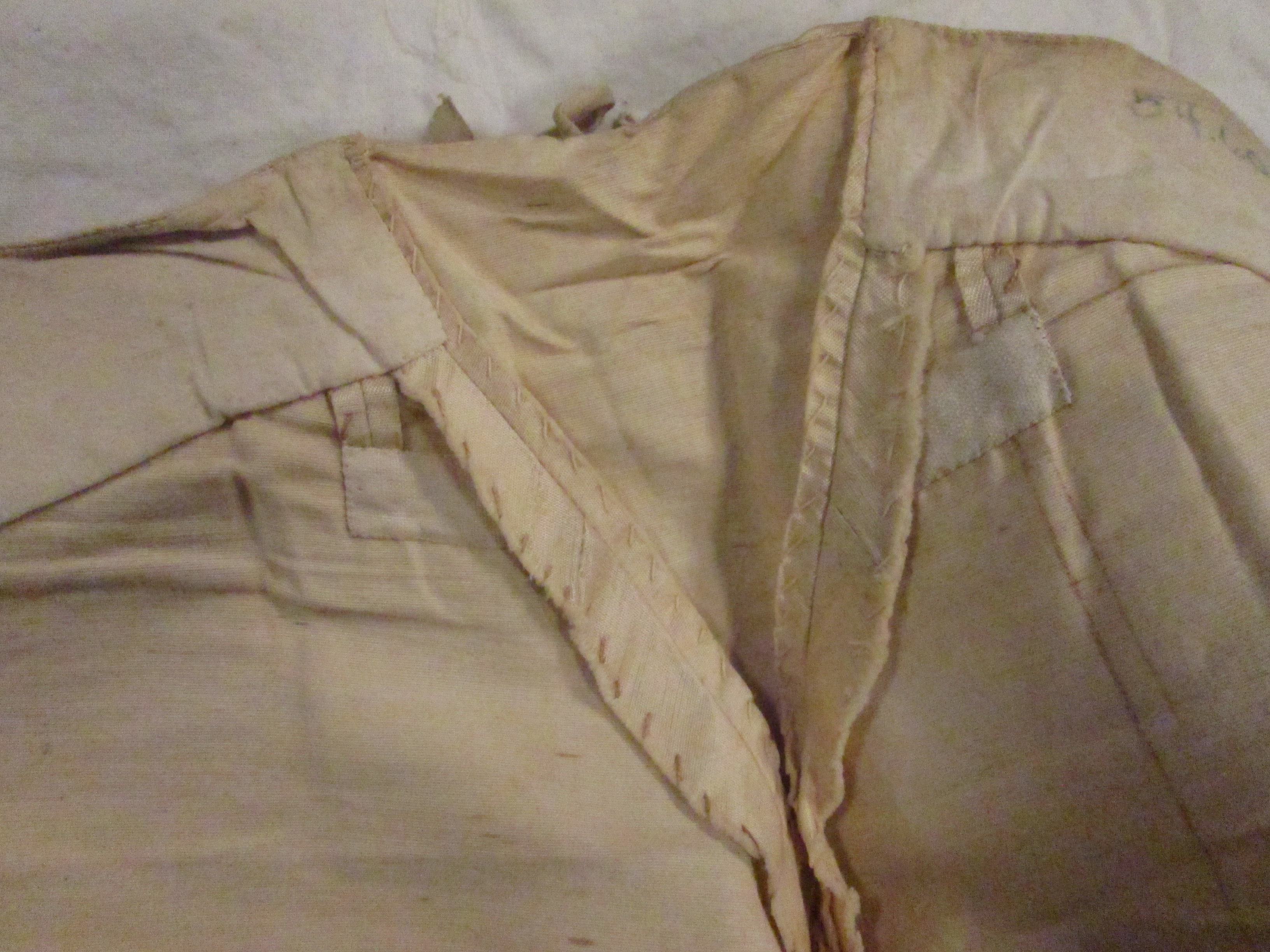
The crotch of the pants have reinforcement stitching at points of stress. This is common in modern pants as well, but is usually on the inside instead of outside.
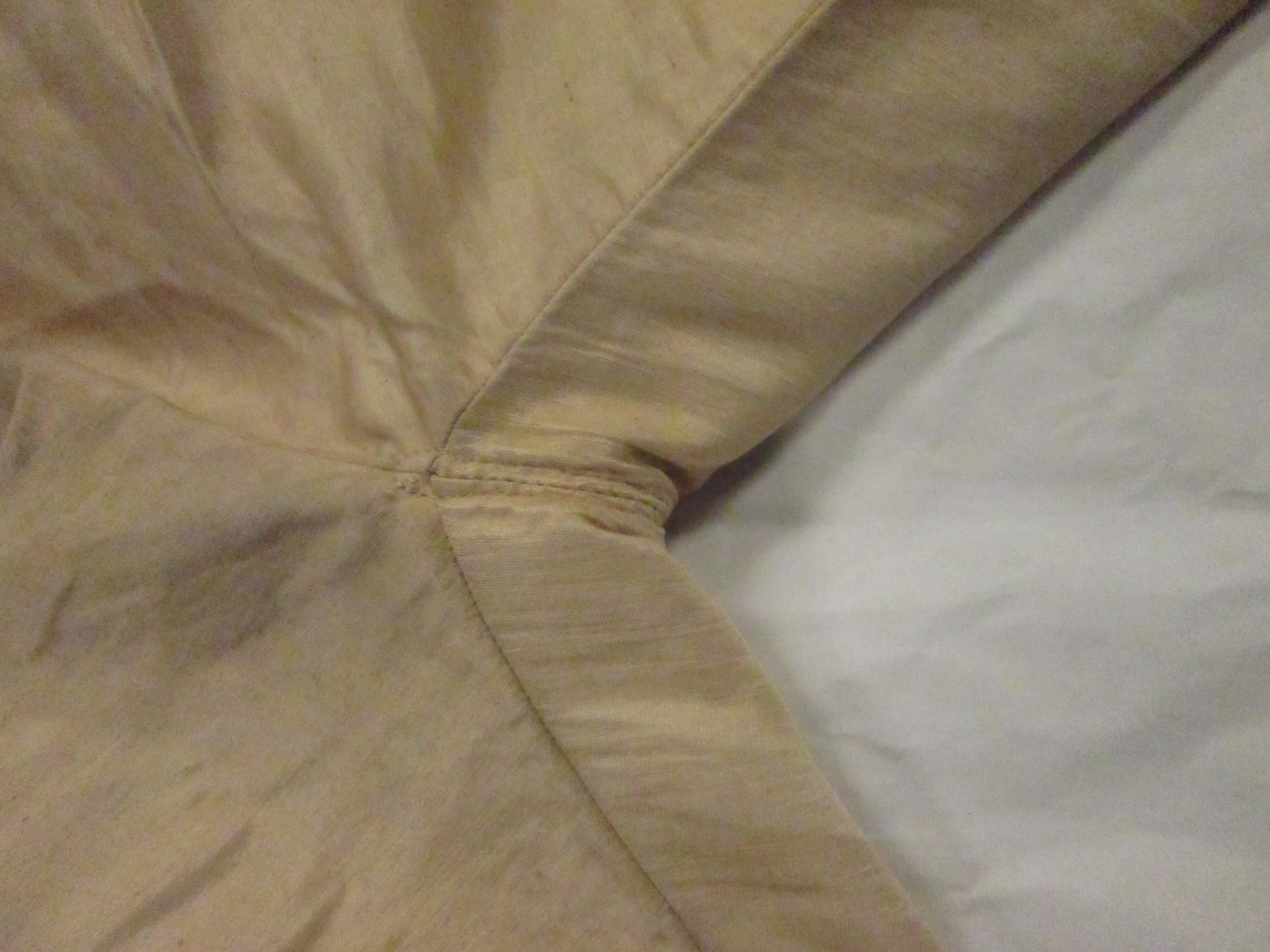
The bottom of the pants have leather strips that button on to the inside of the hem. These stirrups keep the pants taut to the leg when wearing boots, or when the man sits or rides. Women who lived through the 1980’s are very familiar with stirrup pants, but these would feel foreign to the modern man.
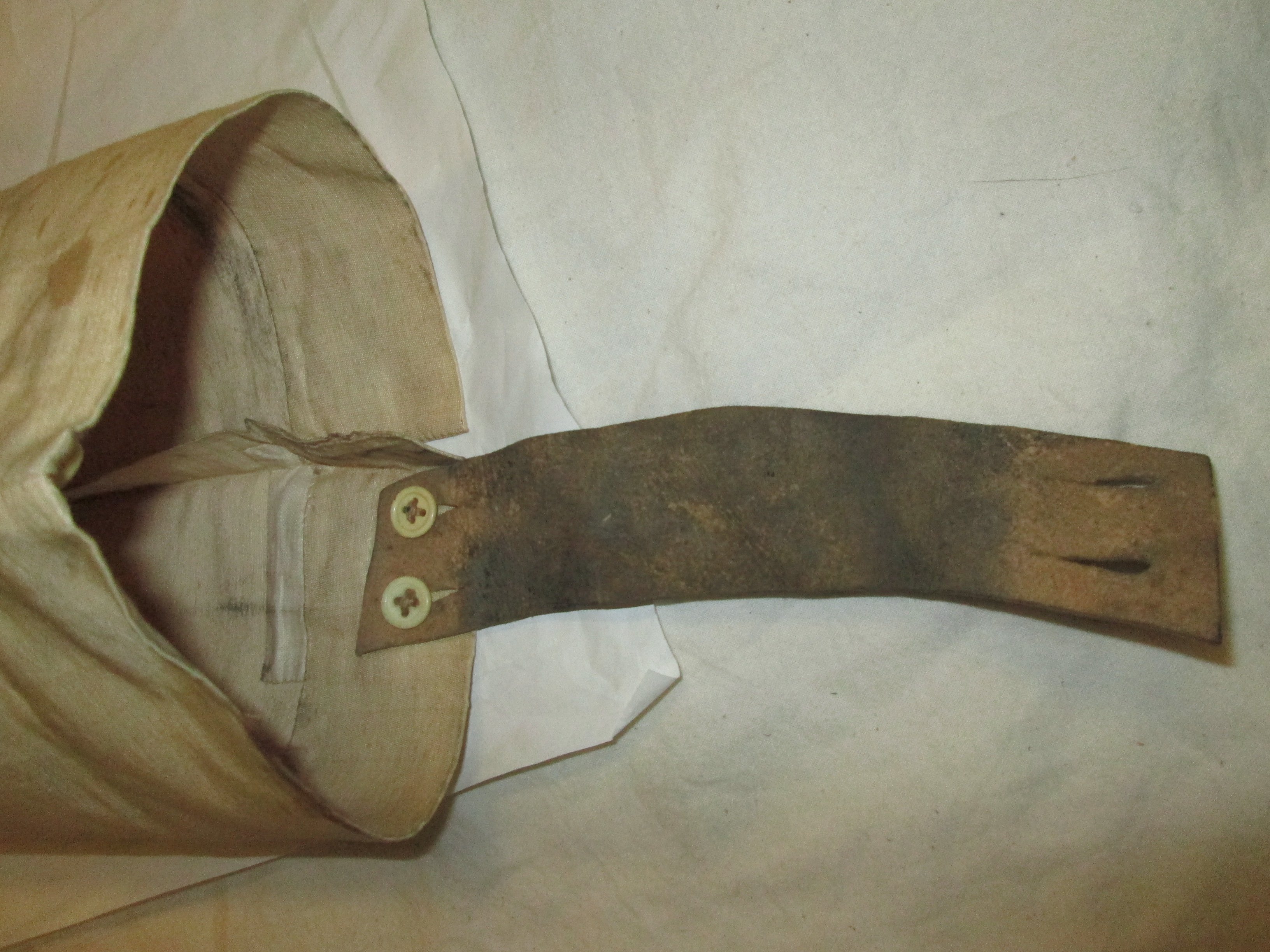
The overall effect of the cream silk trouser would be to lengthen the male leg and set off the well tailored and understated tailcoat of the Regency man. In contrast to the bright colors and floral designs of the late-eighteenth century, the early-nineteenth century man depended on flattering, well tailored shapes to establish his elegance. With today’s fashion of narrow men’s suits with fitted jackets, men are again presenting a slim silhouette, until the wheel of fashion turns.
New Call-to-action

